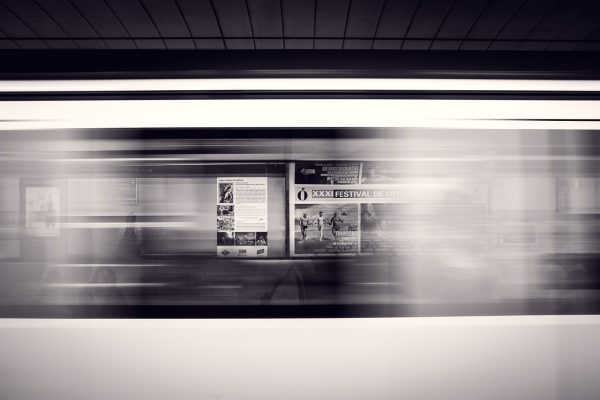The hidden benefits of Britain’s new railway are vast. The only problem is they’re hidden
In recent months there has been no shortage of ill-thought through articles in the British press urging the cancellation of High Speed 2, a transport project aiming to better connect London, Birmingham, the East Midlands, Leeds and Manchester by rail.
However, such articles discuss HS2 without grappling with the real reasons all the main political parties support its construction and professional transport managers consider it excellent value for money. Despite all the negativity, HS2 remains an attractive prospect.
Two critics – the TaxPayers’ Alliance and Liz Truss, Chief Secretary to the Treasury – take a dim view of HS2 because they believe the money could be better spent elsewhere in the UK (or not spent at all). Others, however, see HS2 precisely as a means of pump-priming British industry during its construction. In addition to using British materials and workforce, the project calls for the building of new trains in either northern England or Scotland and giving developers massive new opportunities in North London, the West Midlands and North England. These opportunities will also take the strain off London, by making it easier to live and work outside the pressure pot of London and the South East.
HS2 is not just being built to create faster journey routes, though. It’s being built to relieve the congestion on the West Coast main-line from London to Manchester via Birmingham. These main-lines were built 150 years ago to cater for a tiny percentage of the number of trains and tonnages of freight that use the lines in the 21st century. The four lines from Milton Keynes to London Euston – and equally, if not more importantly, the two-track lines from Rugby through Coventry, Birmingham International, Birmingham New Street, Sandwell & Dudley to Wolverhampton – are full. The West Midlands is desperately trying to improve the number of trains, and therefore seats, on these local routes so as to energise prospects in the region. Good rail links are vital before developers can exploit the potential of the Wolverhampton to Coventry corridor.
The success of new and modernised rail routes can clearly be seen to the south of Birmingham, around Redditch and Bromsgrove, where newly electrified railway routes have transformed travel patterns and opportunities for employers and employees.
The West Coast main-line is currently handling passenger services stopping frequently at closely spaced stations, freight trains at 75mph, inter-urban passenger services travelling at up to 100mph and InterCity services at 125mph. These do not mix easily – the stopping trains, the freight and the InterCity services eat up track capacity either by being too slow or too fast.
As recent smart motorway improvements have shown, capacity is greatly increased by regulating speed, with lorries and cars travelling at the same speed (whether 50mph, 60mph or 70mph). It is the same with railways. The best way of doing this between London, Birmingham and the northern cities is to segregate InterCity services from other traffic. This will also allow more InterCity services to call at towns such as Rugby, Nuneaton, Tamworth, Lichfield, Stafford etc., because trains calling at these stations will no longer hold up following non-stop expresses.
HS2 is being built to vastly increase the capacity for extra development not only in the West Midlands, and later in the North of England, but between Milton Keynes and London – to cater for the development opportunities around Bletchley to be served by new rail and road links.
If this line is to be constructed, it obviously makes sense to build to the newest standards, drawing on the experience of dozens of countries that have built such modern infrastructure. This new route will be engineered underground for much of its length – at the request of local residents and at considerable cost to the nation’s taxpayers. The government has listened to local residents in the Chilterns and accommodated them as much as feasible within budget constraints.
Similarly, construction is being made by rail wherever possible to reduce problems in the local build areas, and millions of trees are already being grown to be planted along its route. The construction of HS1, between London and Dover, has shown conclusively that these lines can be built in a responsible manner, with minimal after effects due to modern sound reduction on trackside infrastructure and train design. Engineers know exactly which areas to target in order to reduce noise.
The new HS2 chairman and his team have recently reviewed the project and been questioned by the Transport Select Committee under oath and in front of television cameras, publicly stating that the line can be built for the agreed budget, within the predicted time frame and retaining the original line speeds and capacity.
Why, then, are the critics of HS2 so adamant it is a failed project – doomed from the start, and now best abandoned before any more money is wasted?
Perhaps it is ultimately because the hidden benefits of modern infrastructure are vast – but hidden. They emerge over the lifetime of a project, not just its construction period. Private enterprise reaps the immediate profits – the government’s much more considerable returns being felt in the long run through increased tax take, a larger GDP and (in the case of HS2) by bringing North and South closer towards a common economy.
Does the TaxPayers’ Alliance really know more about the need for the line than all the transport experts, the construction industry and 95% of the politicians involved in this project? The Alliance has a simple aim: to reduce tax expenditure. It is perhaps inevitable that it does not lose sight of that aim – but cannot spot the invisible but profound benefits that will flow from the completed project for the next 100 years (and perhaps beyond).







